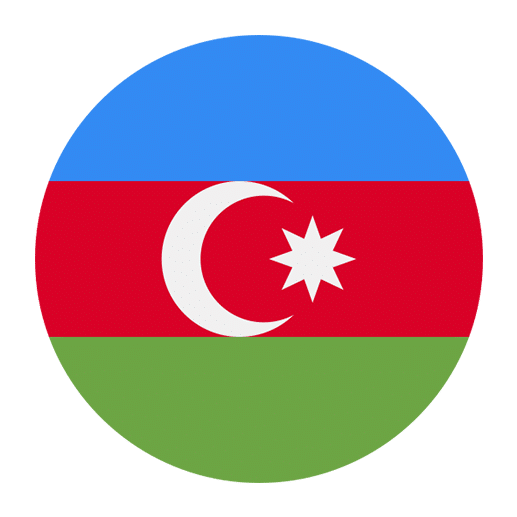Auxiliary verbs play a crucial role in the formation of tenses in many languages, including Azerbaijani. Understanding how these auxiliary verbs function can greatly enhance your ability to communicate effectively and accurately in Azerbaijani. This article aims to provide a comprehensive overview of the use of auxiliary verbs in Azerbaijani tense formation, serving as a valuable resource for English speakers who are learning Azerbaijani.
Understanding Auxiliary Verbs in Azerbaijani
Auxiliary verbs, also known as helping verbs, are used alongside main verbs to create different verb tenses, moods, and voices. In Azerbaijani, auxiliary verbs are essential for forming compound tenses, which consist of a main verb and one or more auxiliary verbs. These auxiliary verbs help convey nuances such as time, aspect, and modality.
Common Auxiliary Verbs in Azerbaijani
In Azerbaijani, some of the most commonly used auxiliary verbs include “olmaq” (to be), “etmək” (to do), and “var” (to have). These verbs are used in various combinations to form different tenses and aspects. Understanding their conjugations and uses is fundamental to mastering Azerbaijani verb tenses.
Olmaq (To Be)
The verb “olmaq” is used to form continuous and perfect tenses in Azerbaijani. Its conjugation varies according to the subject and tense.
Etmək (To Do)
“Etmək” is another versatile auxiliary verb that is often used to create compound verbs and to emphasize actions. Its conjugation also changes based on the subject and tense.
Var (To Have)
The auxiliary verb “var” is primarily used to indicate possession or existence. It is less commonly used in tense formation but is still important to understand.
Present Tense
In Azerbaijani, the present tense is formed without the use of auxiliary verbs. The main verb is conjugated according to the subject. For example:
– Mən gəlirəm. (I am coming.)
– Sən oxuyursan. (You are reading.)
– O yazır. (He/She is writing.)
Present Continuous Tense
The present continuous tense in Azerbaijani is formed using the auxiliary verb “olmaq” in its present form, combined with the main verb in its present participle form. For example:
– Mən gəlirəm. (I am coming.)
– Mən gəlməkdəyəm. (I am in the process of coming.)
– Sən oxuyursan. (You are reading.)
– Sən oxumaqdasan. (You are in the process of reading.)
Past Tense
The past tense in Azerbaijani is formed by adding specific suffixes to the root of the main verb. For example:
– Mən gəldim. (I came.)
– Sən oxudun. (You read.)
– O yazdı. (He/She wrote.)
Past Continuous Tense
The past continuous tense is formed using the auxiliary verb “olmaq” in its past form, combined with the main verb in its present participle form. For example:
– Mən gəlirdim. (I was coming.)
– Sən oxuyurdun. (You were reading.)
– O yazırdı. (He/She was writing.)
Future Tense
The future tense in Azerbaijani is formed by adding specific suffixes to the root of the main verb. For example:
– Mən gələcəyəm. (I will come.)
– Sən oxuyacaqsan. (You will read.)
– O yazacaq. (He/She will write.)
Future Continuous Tense
The future continuous tense is formed using the auxiliary verb “olmaq” in its future form, combined with the main verb in its present participle form. For example:
– Mən gəlməkdə olacağam. (I will be coming.)
– Sən oxumaqda olacaqsan. (You will be reading.)
– O yazmaqda olacaq. (He/She will be writing.)
Perfect Tenses
Perfect tenses in Azerbaijani are formed using the auxiliary verb “olmaq” in its respective tense (present, past, or future), combined with the past participle form of the main verb.
Present Perfect Tense
The present perfect tense is formed using the auxiliary verb “olmaq” in its present form, combined with the past participle of the main verb. For example:
– Mən gəlmişəm. (I have come.)
– Sən oxumusan. (You have read.)
– O yazıb. (He/She has written.)
Past Perfect Tense
The past perfect tense is formed using the auxiliary verb “olmaq” in its past form, combined with the past participle of the main verb. For example:
– Mən gəlmişdim. (I had come.)
– Sən oxumuşdun. (You had read.)
– O yazmışdı. (He/She had written.)
Future Perfect Tense
The future perfect tense is formed using the auxiliary verb “olmaq” in its future form, combined with the past participle of the main verb. For example:
– Mən gəlmiş olacağam. (I will have come.)
– Sən oxumuş olacaqsan. (You will have read.)
– O yazmış olacaq. (He/She will have written.)
Conditional Tenses
Conditional tenses in Azerbaijani are formed using the auxiliary verb “olmaq” in its conditional form, combined with the main verb in its respective form.
Present Conditional Tense
The present conditional tense is formed using the auxiliary verb “olmaq” in its conditional form, combined with the present form of the main verb. For example:
– Mən gəlsəm. (If I come.)
– Sən oxusan. (If you read.)
– O yazsa. (If he/she writes.)
Past Conditional Tense
The past conditional tense is formed using the auxiliary verb “olmaq” in its conditional form, combined with the past form of the main verb. For example:
– Mən gəlsəydim. (If I had come.)
– Sən oxusaydın. (If you had read.)
– O yazsaydı. (If he/she had written.)
Imperative Tense
The imperative tense in Azerbaijani is formed without the use of auxiliary verbs. The main verb is used in its imperative form. For example:
– Gəl! (Come!)
– Oxu! (Read!)
– Yaz! (Write!)
Subjunctive Mood
The subjunctive mood in Azerbaijani is used to express wishes, doubts, or hypothetical situations. It is formed using the auxiliary verb “olmaq” in its subjunctive form, combined with the main verb in its respective form. For example:
– Mən gələsəm. (If I were to come.)
– Sən oxuyasan. (If you were to read.)
– O yazsa. (If he/she were to write.)
Negative Forms
Negative forms in Azerbaijani are created by adding the negative particle “deyil” before the auxiliary verb or by adding the negative suffix “-ma/-mə” to the main verb. For example:
– Mən gəlmirəm. (I am not coming.)
– Sən oxumursan. (You are not reading.)
– O yazmır. (He/She is not writing.)
In compound tenses, the negative particle “deyil” is used before the auxiliary verb. For example:
– Mən gəlməmişəm. (I have not come.)
– Sən oxumamısan. (You have not read.)
– O yazmayıb. (He/She has not written.)
Interrogative Forms
Interrogative forms in Azerbaijani are created by adding the question particle “mı/mi/mu/mü” to the end of the auxiliary verb or the main verb, depending on the tense. For example:
– Mən gəlirəmmi? (Am I coming?)
– Sən oxuyursanmi? (Are you reading?)
– O yazırmı? (Is he/she writing?)
In compound tenses, the question particle is added to the auxiliary verb. For example:
– Mən gəlmişəmmı? (Have I come?)
– Sən oxumusanmı? (Have you read?)
– O yazıbmı? (Has he/she written?)
Conclusion
Mastering the use of auxiliary verbs in Azerbaijani is essential for forming accurate and nuanced verb tenses. By understanding how auxiliary verbs like “olmaq,” “etmək,” and “var” function in different tenses, you can significantly improve your Azerbaijani language skills. Practice conjugating these verbs and using them in various tenses to become more proficient in Azerbaijani. Remember that language learning is a gradual process, and consistent practice will lead to improvement over time.

